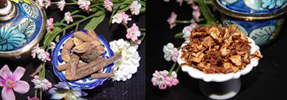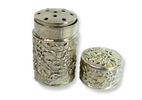


Thai Spa & Traditional Thai Massage
Thai Secret of Sensual Healing
Thai Secret Of Sensual Healing Healing through scent it an ancient tradition and the Thai have long believed in the powerful properties of perfume. They harness the fragrance of Thai flowers in a number of innovative ways; check out these aromatic ideas. |
  |
The traditional yaa-hom is a mix of herbs and flowers, whose key ingredients include refreshing menthol, sensuous ylang-ylang, sweet jasmine and champak blossoms. It's believed that a whiff of this herbal medicine can treat faintness, cure dizziness, soothe headaches, banish nausea and relieve gas. There's also a modern-day version in the form of the commercially marketed sniffing tube called yaa-dom, or "smelling medicine". The size of a lipstick, yaa-dom contains either oil of camphor, or a mix of camphor and menthol. When inhaled, it helps with dizziness or faintness, and is also handy in providing relief from unpleasant odors. Vastly popular among modern young Thais, its use reflects the age-old habit of using aromatic herbal remedies. So how can the smell of herbs and flowers heal our frazzled nerves? Through aromatherapy, a healing practice that dates back to ancient times, that's how. By harnessing the fragrance of essential oils from plants, aromatherapy triggers the senses and affects our emotional and physical states. A plant's aroma comes from its essential oils, which contain dozens of complex chemicals that have the ability to effect reactions in our nervous systems, thus affecting our moods. The oil molecules are so minute and evaporate so quickly that they can penetrate human skin and enter the bloodstream and organs. As very few substances can penetrate skin, this make essential oils uniquely therapeutic. Here, we consider some of essential oil commonly used in Thailand, their applications, and give you some tips for a variety of feel-good uses and blends. But however you use them, the end results are the same - you'll feel calm relaxed, refreshed - all through the power of scent. |
